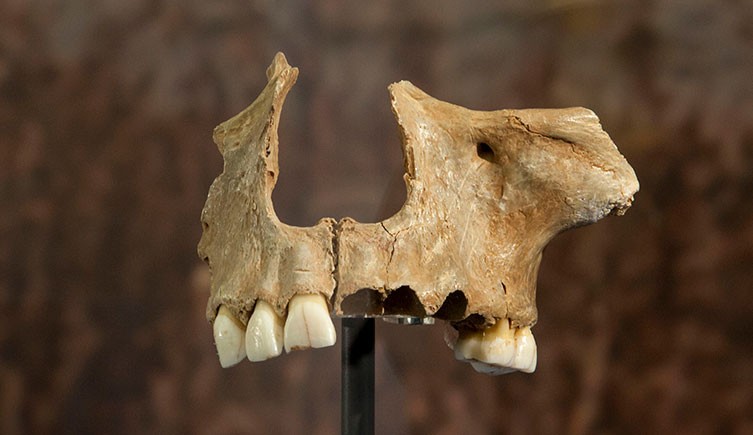The American Wild West is synonymous with outlaws, pioneers, rugged terrain, and epic tales of survival—but it also holds another layer of mystery buried beneath the desert dust and canyon rock: reports of giant human skeletons unearthed by early settlers, miners, and amateur archaeologists. These stories, often dismissed as folklore or hoaxes, have persisted for over a century, appearing in newspaper clippings, mining records, and oral histories. Were these discoveries genuine remnants of an ancient race of giants or merely a reflection of myth-making in a young, superstitious America?
Let’s dig deep into the legend of giant skeletons in the Wild West—where history, archaeology, and speculation collide.
Early Reports: Unearthing the Unbelievable
In the mid- to late-1800s, newspapers across the United States began publishing sensational stories of enormous human skeletons discovered during mining, construction, or farming. These giants were often said to stand 8 to 12 feet tall, with oversized skulls, double rows of teeth, and massive weapons or tools buried beside them.
One of the most cited examples is an 1885 issue of the San Diego Union, reporting the discovery of a skeleton measuring over 8 feet tall in a burial mound in the San Bernardino Valley. Native American laborers reportedly found the bones, and later examined by scientists—though no official record of such an examination survives.
Similarly, in Death Valley, California, miners in the early 20th century claimed to have found tunnels filled with giant human mummies, some over 9 feet tall. While never fully verified, these stories were picked up by regional newspapers and sometimes included elaborate details such as hieroglyphic markings and strange artifacts.
The Smithsonian Institution is often mentioned in connection with these discoveries, typically in a conspiratorial light. Some accounts say giant skeletons sent to the Smithsonian mysteriously disappeared or were “lost.” Critics argue this is more legend than fact, but the recurring mention of this prestigious institution has only deepened the intrigue.
Native American Legends and Oral Histories
Interestingly, the idea of giants roaming the Americas long before European settlers arrived is not solely rooted in settler myths. Native American tribes have stories of colossal beings that once roamed the Earth.
The Paiute tribe, for instance, tells of the Si-Te-Cah, a red-haired tribe of cannibalistic giants that lived in the Nevada region. According to oral tradition, the Paiutes eventually trapped and exterminated these beings by setting fire to their cave—later identified as Lovelock Cave. When guano miners excavated the cave in the early 1900s, they did indeed find mummified remains and massive artifacts. Some bones were huge, though not definitively “giant” by medical standards.
Other tribes, such as the Choctaw, Navajo, and Comanche, also recount tales of gigantic humans—often described as tyrannical, powerful beings who dominated and terrorized smaller tribes before being defeated.
While oral traditions are not always literal historical records, they are cultural touchstones and should not be easily dismissed. These stories raise intriguing questions: Were they based on real encounters, metaphorical battles, or long-lost species of hominids?
Scientific Skepticism and Mainstream Archaeology
Mainstream science has generally approached claims of giant skeletons with deep skepticism. Several reasons underpin this:
Lack of Physical Evidence: Despite numerous stories, no verified skeletons of “giants” have ever been cataloged or confirmed by modern anthropologists. Bones reportedly sent to universities or museums are either unaccounted for or never existed.
Newspaper Sensationalism: The 19th century was the golden age of “yellow journalism”—when newspapers often published exaggerated or fabricated stories to increase sales. A giant skeleton would make an eye-catching headline, regardless of the truth.
Misidentification: Many alleged “giant” bones were likely misidentified. Large femurs or skulls could belong to animals such as mastodons or bison, mainly if found in a fragmented condition.
Proportional Impossibility: Human skeletal proportions change with height. Massive skeletal and muscular adaptations would be required for a human to reach 10-12 feet in height and remain functional. Modern medicine considers this physiologically unlikely due to gravity and bone density limitations.
Still, some researchers and independent historians question whether the complete dismissal of giant skeleton claims is justified. After all, the existence of Homo floresiensis (a diminutive human species discovered in Indonesia) was once considered implausible, too.
Lovelock Cave: Ground Zero for Giant Theories
Lovelock Cave, located in northwestern Nevada, is arguably the most famous site associated with the giant skeleton lore. Excavated in the early 20th century by miners and later by archaeologists, the cave yielded thousands of artifacts—including baskets, tools, and bones.
Among the discoveries were several mummified remains, one of which allegedly belonged to a person nearly 8 feet tall. Photographs of large femurs and skulls exist, but none of these remains were definitively documented under modern scientific scrutiny. Many artifacts from Lovelock now reside in museums, but the alleged giants? Gone.
Researchers working in the area today often find that stories surrounding the cave have blended archaeological fact with local folklore. The red-haired mummies, for instance, may have been regular-sized individuals with naturally reddish hair due to mummification and mineral exposure.
Smithsonian Conspiracy Theories
A frequent element in the giant skeleton narrative involves the Smithsonian Institution, which is often accused of covering up anomalous human remains that do not fit the accepted evolutionary timeline.
2014, a satirical article claiming that the Smithsonian had admitted to destroying thousands of giant skeletons went viral. Despite being fictional, the story tapped into long-standing suspicions held by fringe historians and alternative researchers. The idea that a major institution would suppress revolutionary findings has excellent appeal in conspiracy circles—but lacks direct evidence.
The Smithsonian itself has repeatedly denied any involvement in hiding or destroying skeletons. Their records show no evidence of such remains being part of their collections. However, the lack of transparency in older 19th-century cataloging and documentation has fueled ongoing doubts.
Modern Interpretations: Myth or Memory?
Today, the idea of ancient giants continues to fascinate. From YouTube documentaries and books on forbidden archaeology to popular shows like Ancient Aliens, the narrative is kept alive in the public imagination.
Some suggest that stories of giants might stem from early encounters with Neanderthal or Denisovan remains, ancient human relatives who were stockier and, in some cases, larger-boned than modern Homo sapiens.
Others propose a more speculative theory: that giants could have been a now-extinct branch of humanity, erased from the historical record by natural disasters or human conflict.
While these ideas are on the fringe of academic consensus, they reflect a deep cultural yearning for hidden history—a belief that humanity’s past is richer and stranger than textbooks suggest.
Conclusion: A Legend That Refuses to Die
Whether born of exaggerated journalism, misidentified bones, or genuine archaeological anomalies, the legend of giant skeletons in the Wild West is deeply woven into the tapestry of American folklore. These stories reflect not just the mystery of the landscape but the wonder and fear of early settlers confronting the unknown.
Though modern science has not validated the existence of a race of ancient giants, the persistence of the legend speaks volumes. It reminds us that history is not always what it seems—and that sometimes, the truth lies between the bones and the stories we tell about them.
Until a verified skeleton of a 10-foot human is displayed under glass, the giants of the Wild West will remain legends—but legends worth revisiting, again and again.




